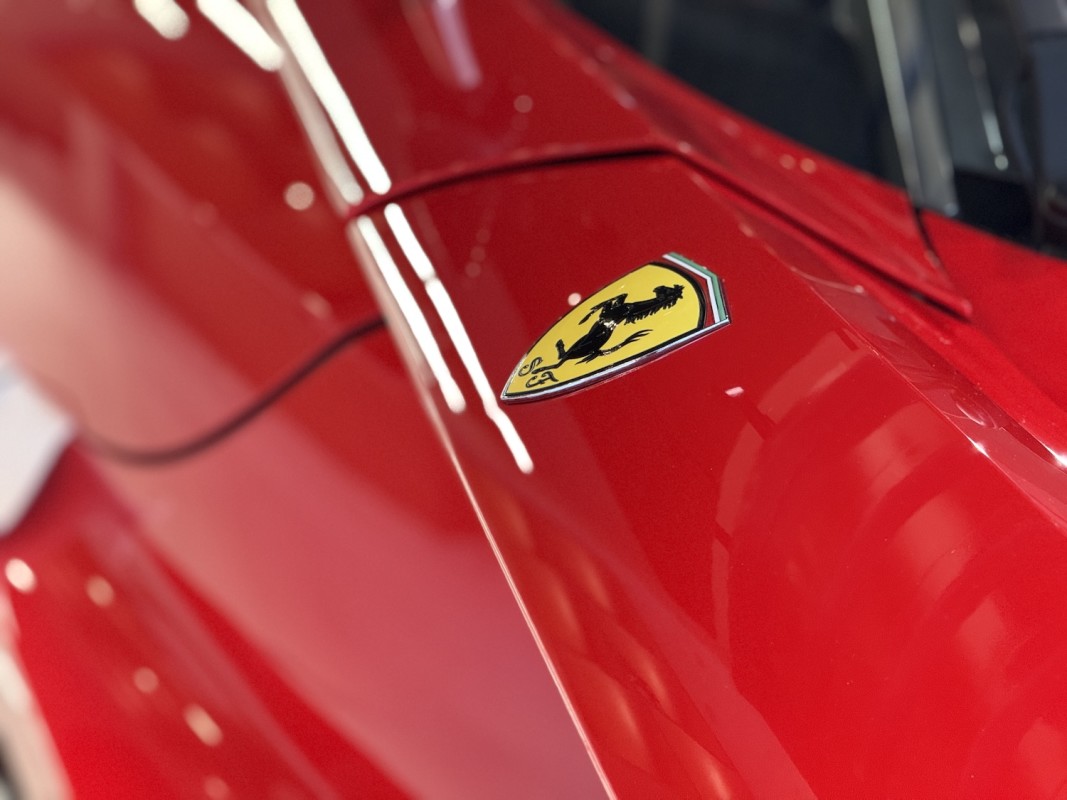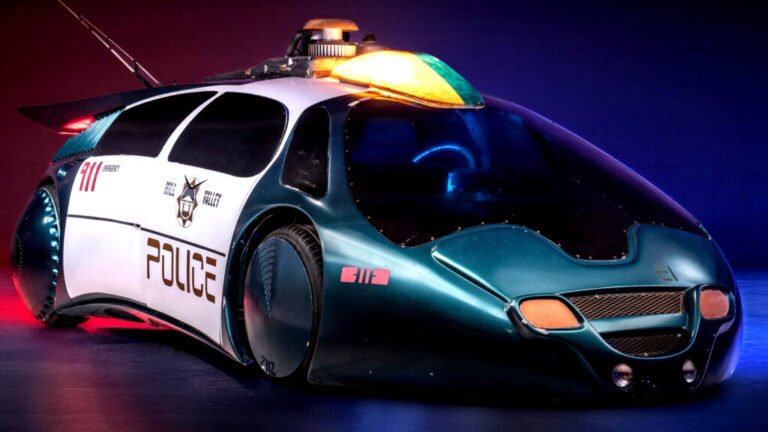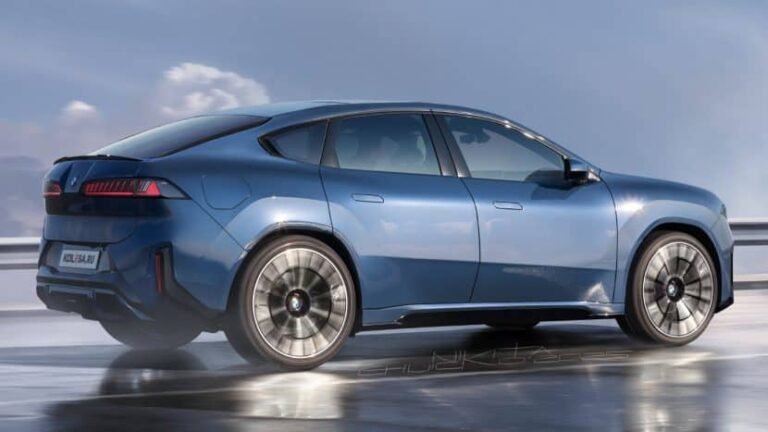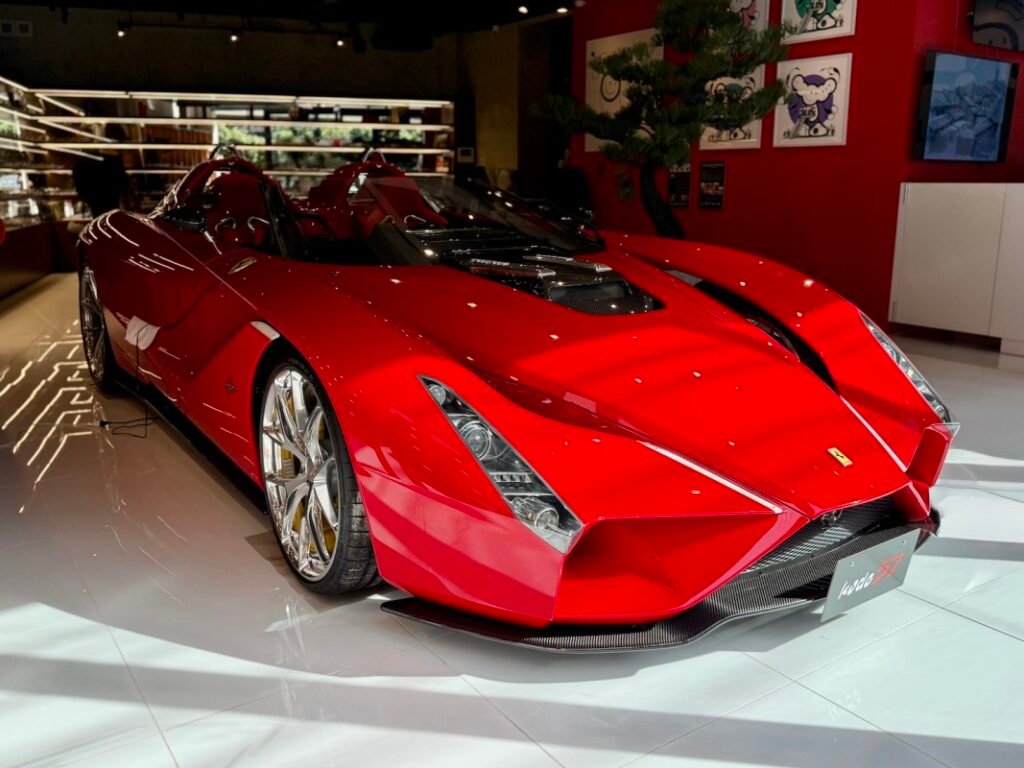
A Hidden Gem in Harajuku
Harajuku is unofficially known as Tokyo’s center of fashion. Between Takeshita Street’s beautiful chaos and the serene charm of Omotesando, it’s the place where trends are mostly reinvented. But a few turns away from the crowded alleys and influencer cafes, I wandered into a quieter part of the neighborhood – one lined with modern high-end but gateless houses rather than one-off boutiques. That’s when I noticed a name printed behind a glass atop a red backdrop: Ken Okuyama Design.
Inside was a space that felt like a gallery – clean, minimalist, and reverent. But what instantly stole my attention wasn’t the architecture or lighting – it was the car parked in the middle of the studio.
Low, wide, and impossibly elegant, the Kode 57 sat there like a sleeping creature from another era, which it literally was. First introduced in 2016 with the Ferrari 599 as the base car, the Kode 57’s shape – long nose, open cockpit, sharp edges – made me freeze.
I wasn’t expecting to stumble upon something so extraordinary in the middle of Tokyo’s fashion capital.
Jacob Oliva/Autoblog
Ken Okuyama: A Name Behind Enzo
Ken Okuyama is one of Japan’s most respected industrial designers and arguably the only one to have left a significant mark on European supercar culture. Born in Yamagata in 1959, he graduated from the Art Center College of Design in California before moving through some of the industry’s most storied institutions. He worked at GM’s Advanced Design Center and then at Porsche.
But Okuyama’s time at Pininfarina in Italy is when it’s most notable. There, he led the design of the Ferrari Enzo, among other projects, and played a key role in shaping Maserati’s modern identity, starting with the Quattroporte.
In 2007, Okuyama returned to Japan to establish Ken Okuyama Design, a firm that handles everything from trains (yes, he penned some of Japan’s famous Shinkansen) and furniture to architecture and eyewear. The studio’s philosophy – modern, simple, timeless – runs through everything it produces.
Jacob Oliva/Autoblog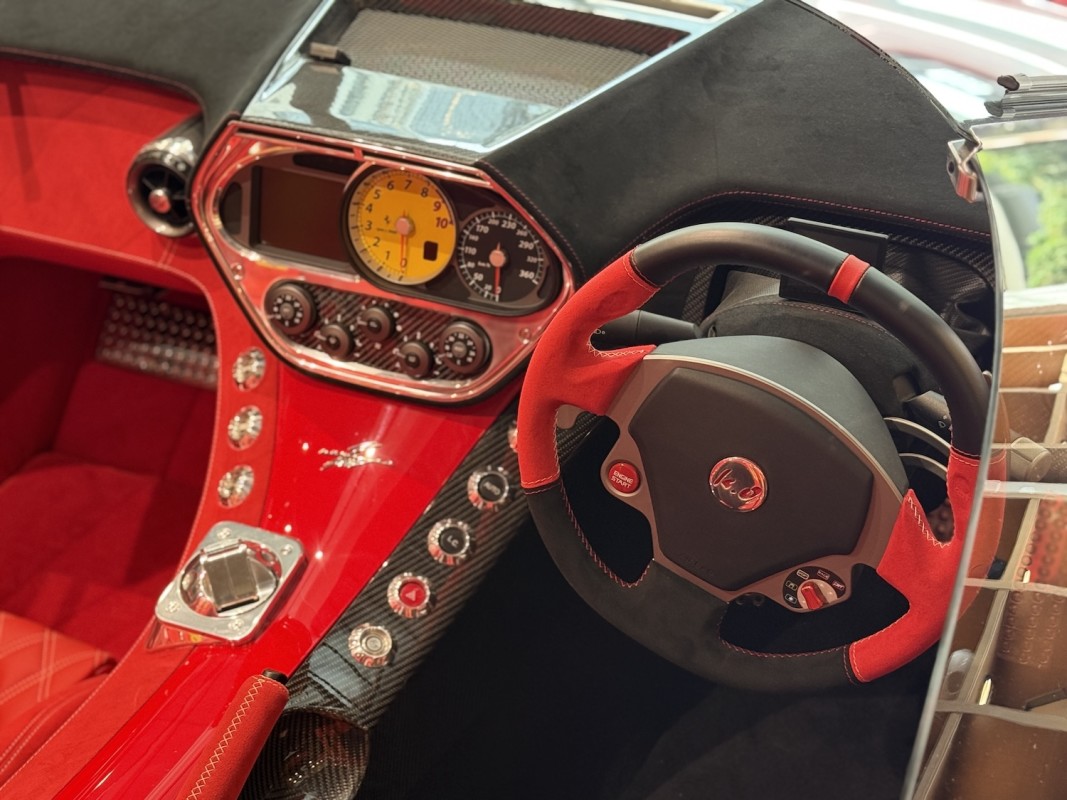
One Out of Five Existing Kode 57s
The Kode 57 is Okuyama’s most personal automotive creation, a coachbuilt supercar created under his own brand. The name nods to 1957, the year of the legendary Ferrari Testa Rossa (the race car, not the revived road car), and the car’s design channels its inspiration’s flowing, hand-shaped metalwork – reimagined with modern materials.
Beneath its sculpted Ferrari 599 body lies a 6.0-liter V12 pushing around 690 horsepower, wrapped in carbon fiber and aluminum. Only five exist worldwide, each one individually commissioned and hand-built.
Seeing the Kode 57 in the metal, the craftsmanship is impossible to ignore. The way the front fenders arc away from the cockpit, the hollow aero fins, and the balance of proportion and detail – all reveal how far Okuyama pushes form and material. The chrome accents in the cabin may not be everyone’s cup of tea, but they blend with the rather timeless design of the front-engined, rear-wheel supercar.
Among the many automotive sights Japan has to offer – R34 Skylines prowling Daikoku, Lamborghinis idling in Roppongi, even lowriders parked proudly in Shibuya – nothing came close to that moment in Harajuku.
If you have the chance to visit Tokyo, Ken Okuyama’s design studio is a must-see. It’s where this masterpiece rests, along with his other creations. Located at 2−27−13 Jingumae, Shibuya-ku, Tokyo, it’s around 2,000 steps from the Harajuku station of the Yamanote line – an understated spot for one of the most extraordinary cars ever built.
Jacob Oliva/Autoblog